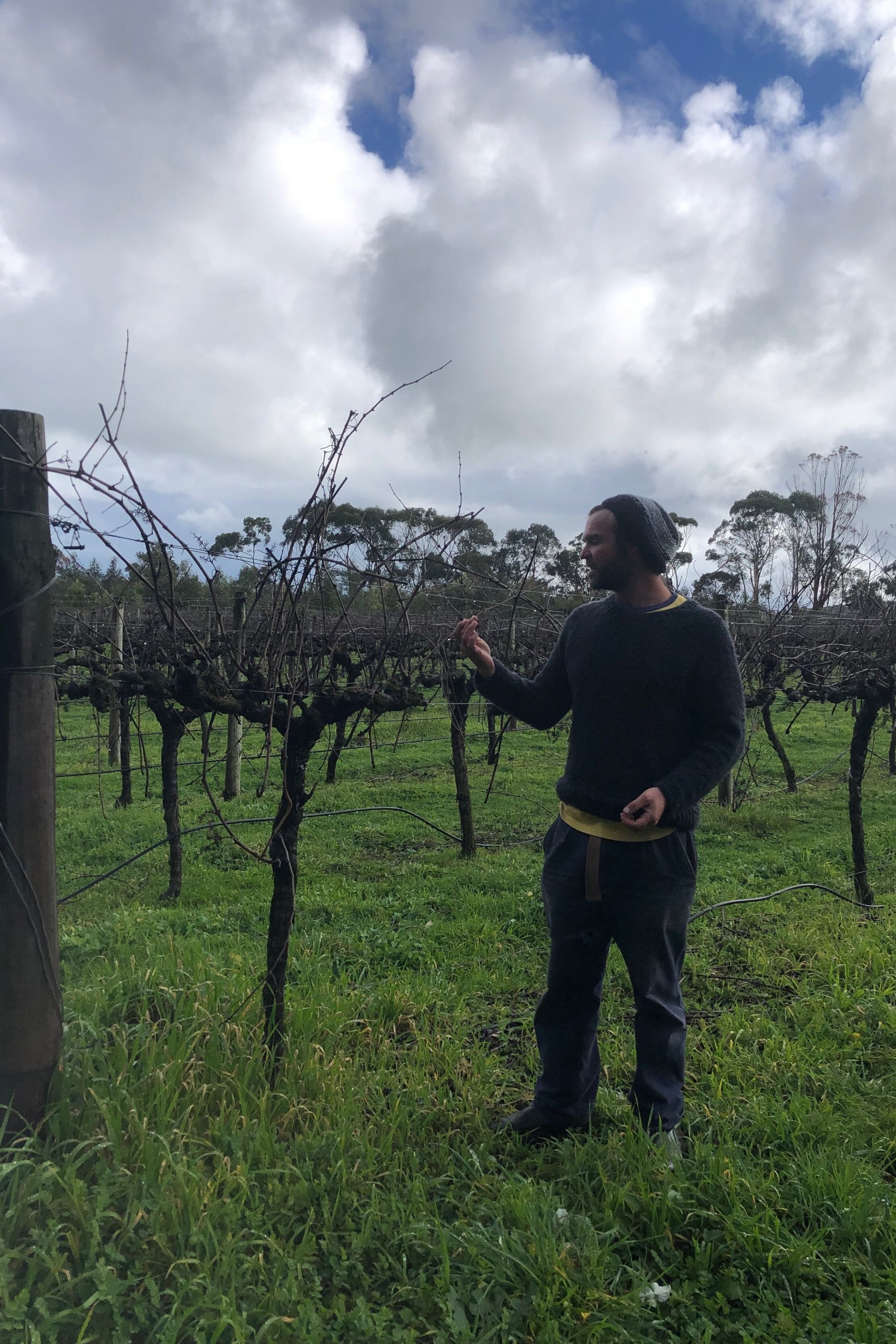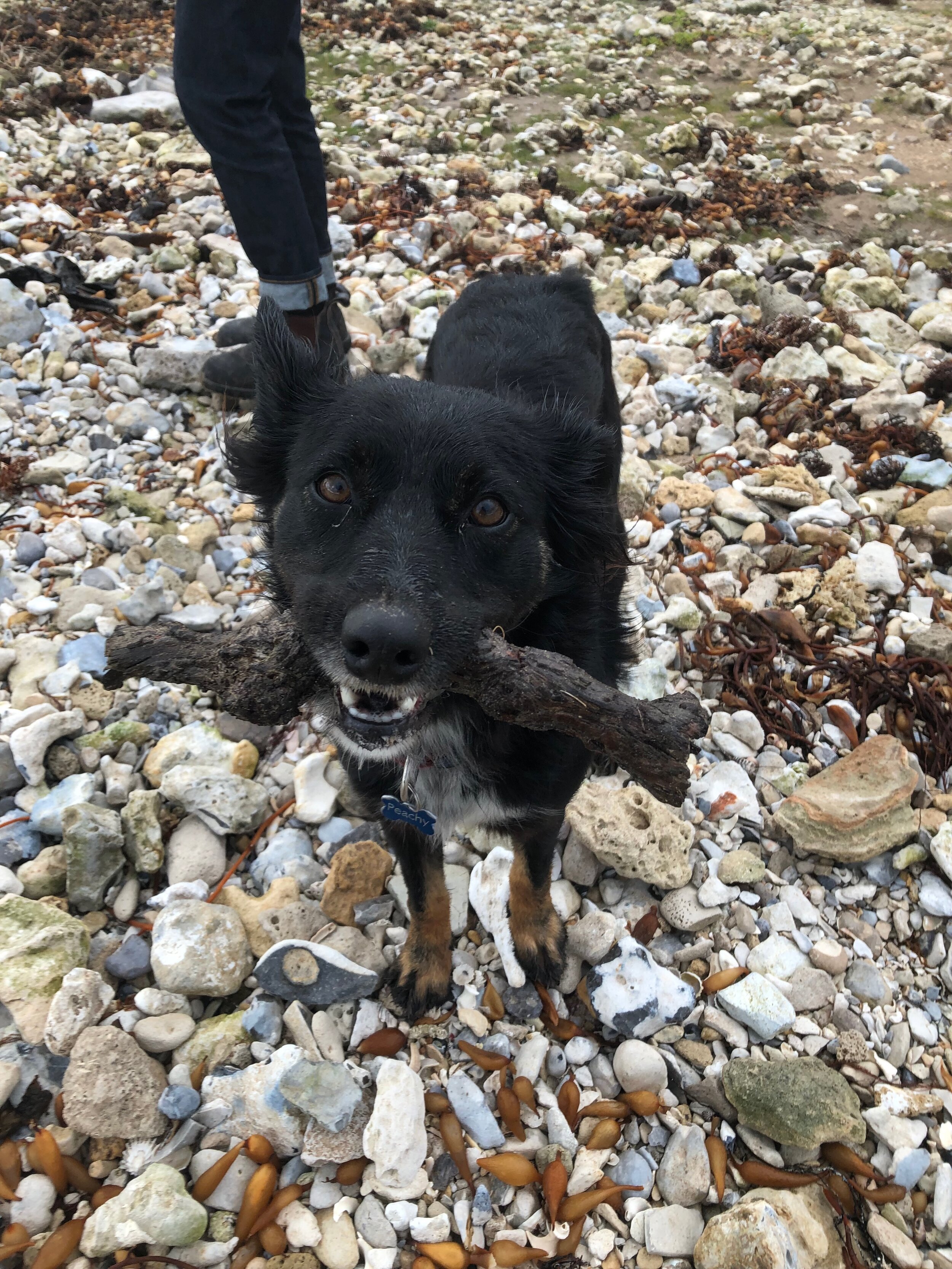Limus
who – Kyatt Dixon (owner/winemaker)
where – Mount Gambier, South Australia
vineyards – organically farmed Pinot Noir, Merlot, Chardonnay and Riesling + plus an organically farmed heirloom apple and quince orchards
winemaking – preservative/additive free
labor practices – from Kyatt: I probably have less experience working with contract labour than most winemakers, choosing instead to work with friends and family in the winery and on the few small vineyards I manage. Money is of course an issue for everyone, and I believe that we should really think carefully about how and where we spend it. If I need help with something I focus on putting resources back into my community and to people with similar values (particularly when it comes to agriculture). If I need to, I prefer to work closely and slowly with one or two people so that together we can achieve specific goals and a level of quality from each block (for pruning particularly, but also picking). This attention to detail is critical in my approach to growing grapes. Organic viticulture, without the use of conventional fungicides, is a very risky business, particularly with the cool, wet conditions of Mount Gambier. Even in a good year our yields are low due to no (or in some cases very little) irrigation. In a bad year for disease some blocks can be completely wiped out. Keeping the vineyards as tidy as we can (cutting grass, immaculate pruning, removing water shoots) helps ameliorate these risks and reduces the need to spray for disease but is extremely labour intensive. To this end, we now employ one permanent part-time assistant through a local disability employment program who is paid the full award plus superannuation. While this may not be the most efficient or cost-effective way of growing grapes and making wine, walking through our blocks, surrounded by life in balance, immediately justifies this labour of love.
further notes from Kyatt –
Limus means “seaweed” in Bislama, the official language of Vanuatu, South Pacific. I was pretty into seaweed there for a while, and also pretty into coconuts, so spent a while on some remote South Pacific beaches getting to know the locals, their language and their seaweeds, hence the name. Now I make preservative-free (natural if you like, but I’m still getting my head around what this means to different people so prefer not to say it) wine with my partner Anna in the southernmost and easternmost part of South Australia, Mount Gambier, within the Limestone Coast, a region known mostly for its big dog Cabernet’s. Down in the “Mount” we do things a bit differently though. It’s a tiny region dotted with mostly miniscule blocks of Pinot Noir, Chardonnay, Riesling and Sauvignon blanc, which allows us to make wines from varieties we love and also organically farm the majority of our own fruit (right now we lease 5 small vineyards that cover 6 hectares of Pinot noir, Chardy, Riesling, Sauv blanc, Pinot gris and Cab sauv). The fruit that we do buy comes from organic or biodynamic vineyards within or close to the region to try to represent this unique little spot the best we can (and, well, I hate driving).
vineyards –
Quilly’s (Eumeralla) vineyard: The first vineyard we started leasing in Mount Gambier, owned and planted (in the mid 1980’s) by David and Lil Quill. This one hectare Pinot noir (D5V12) block with scattered Chardonnay vines has been given a second life, converted to organics in 2017 and the tired and diseased arms removed and replaced by fresh and vigorous recent growth. The closest of our blocks to the Blue Lake and Mount Gambier volcano, this dry grown vineyard is planted in deep and rich heavy volcanic soil over limstone bedrock.
The Apple Farm: Roughly 1 hectare planted to Riesling and Pinot noir maybe 20 or so years ago (not entirely sure), and organically managed since 2017, this beautiful little event space hosts some of the best parties and weddings in the region. In addition to the grapes, and as the name suggests, there is at least as much area planted to apples, predominantly dessert varieties like Royal Gala, Pink Lady, Summer Red, Granny Smith and Golden Delicious, but also has a couple of rows of mystery (non-palatable) apples thought to be cider varieties, both of which we make our wild fermented cider from each year. Roughly 4km south of Quilly’s, the Apple Farm sits at the edge of one of the many belt-like ancient sand dunes in the area, giving the wines an elegant and etherial vibe. Love sandy soils!
The Greene’s: Literally next door, 50m north of the apple farm and separated by a very small native forest, the Greene’s vineyard, a tiny quarter acre block of D5V12 Pinot noir that was organically managed when I took it over in 2017, makes a very small but top quality wine each year. I’m hoping to finally get the 2021 cuvee over to the US next year. Those grapes on those soils…I can’t get enough!
Childs: A later addition to our suite of vineyards in winter 2018, this previously neglected 1 hectare block of Cabernet sauvignon, again on very sandy soils and about 1km west of the Apple Farm and Greene’s, is being rejuvenated, brought back from the ground and now showing signs of it’s potential. Unlike half an hour up the road in Coonawarra, our Cabernet shows good ripening at lower alcohol (12-13% abv) giving us the chance to (hopefully) produce a more subtle interpretation of the grape.
Talbot rd: Despite taking over full control of this Moorak vineyard only this year (2021), we have been working closely with (pruning, consulting for, and buying fruit at) Talbot rd since 2018. Comprising two 1.5 hectare blocks of two different clones of Pinot noir (D5V12 and MV6, plus scattered plantings of Pinot gris and Sauvignon blanc), this is a huge and exciting new project that boosts our long term goal of minimising the need for buying fruit grown by others. Most importantly, the soils of this site reflect the “terra rossa” like profiles over limestone that make the Coonawarra famous, and which give this Pinot a very unique character among other plantings in Mount Gambier.
summer 2021 release notes –
2020 Clingstone cider: Made largely from Apple farm dessert apples (Gala, Granny and Golden Delicious), this is a crispy and zingy little fizzer which has just enough of a sour plum vibe. Pretty much a breakfast drink.
2020 Heritage cider: A bit more complex, this short macerated coferment of two outer row cider varieties, again from the Apple Farm, has a touch more grip and ferment dominated profile.
2020 Riesling: Ever since I moved to the mount I’ve been frothing on Riesling made here by mates. Restrained aromatics and citrus tang, this is made like others of mine from previous years, short time on skins (4 days), and basket pressed to barrel. That little bit of air that permeates the barrel into the wine relaxes what is otherwise a slightly edgy but pretty, golden beauty.
2020 Double up – Aperitivo: A 50/50 cofermented blend of short macerated Pinot gris and Pinot noir rosé, again in barrel for eight or nine months to relax. Wild strawbs sweetness checked by slightly savoury skinsy gris, it’s a friggen sunny afternoon crowd pleaser, no question.
2020 Big dawg: Big fruit Grenache cofermented with little fruit Riesling and Cabernet making it more of a big little dawg, or little big dawg, I dunno, you choose. Very approachable, low grip, big quench.
fall 2020 release notes –
2019 APPLE + QUINCE CIDER: Made with apples from both the Apple Farm and the Greene's property (next door to one another and both organically grown) and quinces from the Greene's and Andy Burchell's (Good Intentions Wine co.) parents house, this wild fermented cider has a very honest freshness and charming quince aromatics.
2019 RIESLING: A reasonable growing year for this favorite site (the Apple Farm) and variety saw a couple of full hogsheads of briefly macerated (4 days) juice. Kept in old oak for about a year then bottled, like always, without sulfur. Ever present bright acidity matched with pretty and spicy riesling aromatics.
2019 ROSÉ: This direct basket pressed Eumeralla vineyard (Quilly's) Pinot noir expresses the characteristic fullness of the site, growing on fertile volcanic sandy soils over a deep limestone bed. Fermented in a single puncheon for 8 months before bottling under crown seal to retain freshness. Strawberries and cream lazerbeams.
more info –
instagram: limus_wine




